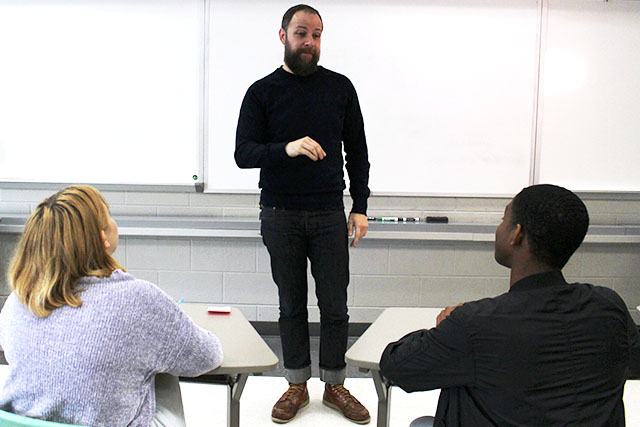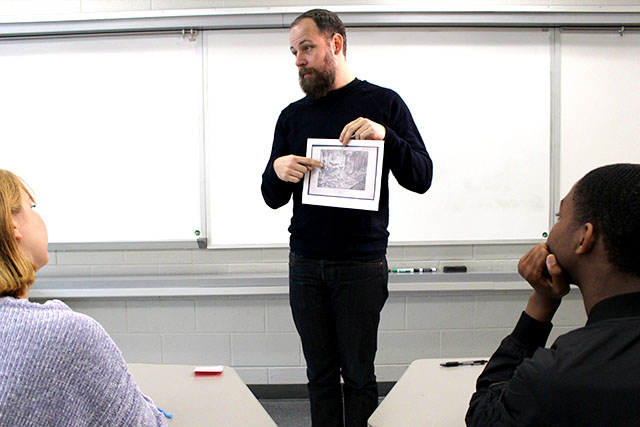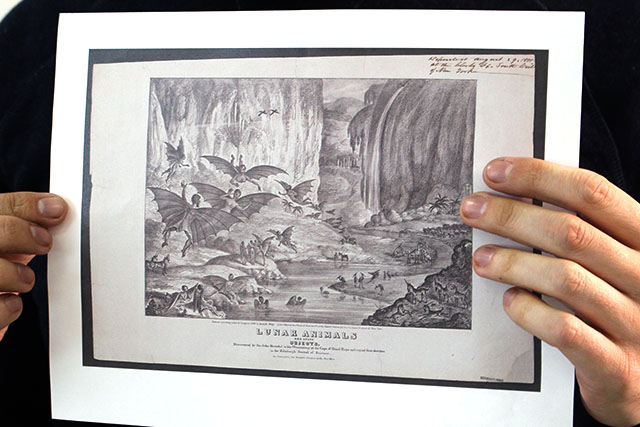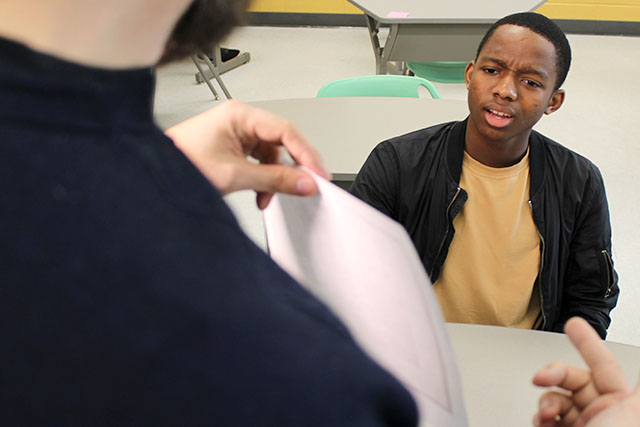Learn It
Identifying Reliable Sources
Let’s look at an historical document that is totally wrong. Mr. Lexington calls it the Great Moon Hoax of 1835. He’ll tell you about it.
Is This Source Reliable?
Mr. Lexington says one way to decide whether a source is reliable is to ask a few key questions:
- Who made this source?
- What is the evidence?
- What do other sources say?
Observe, Reflect, Question
Did you notice that each question fits into the process for evaluating sources? Primary source analysis helps us know if a source is reliable. Remember, Mr. Lexington says that analyzing sources is all about thinking deeply and asking questions. Here’s a reminder of how primary source analysis works.
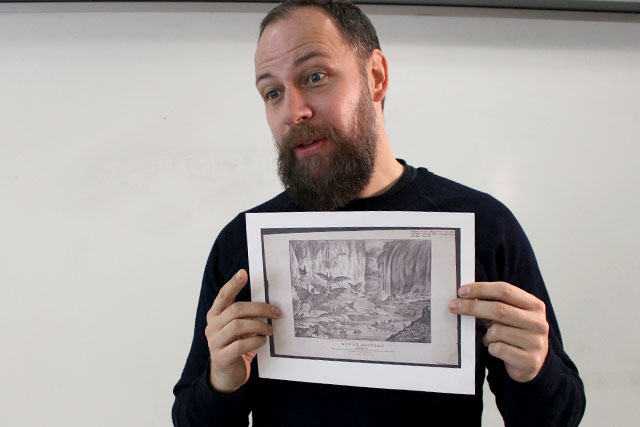 Way to go, Brian! You observed the illustration, reflected on it, and questioned it, so you know that this source cannot be trusted. In fact, the New York Sun published this as a hoax – maybe to get more people to read the paper. It is easy for us to tell that this source can’t be trusted, but people in 1835 believed it. This is the same trouble we have figuring out what to believe on the internet today. Just keep using primary source analysis for historical and modern sources.
Way to go, Brian! You observed the illustration, reflected on it, and questioned it, so you know that this source cannot be trusted. In fact, the New York Sun published this as a hoax – maybe to get more people to read the paper. It is easy for us to tell that this source can’t be trusted, but people in 1835 believed it. This is the same trouble we have figuring out what to believe on the internet today. Just keep using primary source analysis for historical and modern sources.
